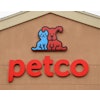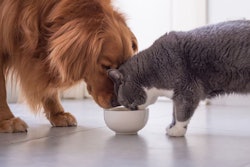
A new report on the U.S. pet food market indicates few dog and cat owners are spending less on food for their pets – based on a survey conducted by Packaged Facts in April and May 2020. As the country struggles to contain escalating cases of COVID-19, unemployment and financial hardship are also increasing. That could eventually affect how much pet owners can spend.
The report, “Pet Food in the U.S., 15th Edition,” released July 10, shows just 16% of dog and cat owners agreed they are spending less on pet food, with only 5% strongly agreeing with the statement. Encouragingly, 25% disagreed with the statement, and 36% strongly disagreed, perhaps confirming the perception created after the Great Recession of 2009-10 that many pet owners will sacrifice spending on high-quality pet food only as a last resort.
What’s a little worrisome, however, are the 22% in the middle: pet owners neither agreeing nor disagreeing that they are spending less on pet food. That segment could be comprised of people experiencing financial strain or worried that hard times are on the horizon. Despite the responses to the specific question about pet food spending, the report also states, “Packaged Facts survey results show that 70% of dog and cat owners are cutting back on spending as a result of the virus, with 69% cutting back on buying non-essentials and 67% being more conscious about wasting food.”
U.S. pet food market still growing
The report covers only dog and cat food, plus toppers and mixers, and does not include treats and chews. Given those parameters, the market reached US$28.89 billion in 2019, Packaged Facts says, representing a healthy 6.4% increase over 2018.
In addition, the market research firm is projecting a slightly larger growth rate for 2020 – up 7% to US$31 billion – even better than the 6% rate originally forecast prior to the onslaught of COVID-19. The rosier projection comes thanks to “coronavirus-driven stockpiling and supplemented by increases in new pet adoptions for the remainder of the year,” the report says. While growth will moderate over the next several years, according to Packaged Facts’ modeling, it will still increase by at least 5% a year through 2024, reaching US$38 billion then.
The caveat to those positive predictions revolves around the economy and millions of pet owners likely suffering financial duress, Packaged Facts says. That could dampen dollar sales as some owners trade down to lower-cost pet food brands and foods, including private label. Yet the continuing shift of the market to “mass premiumization” – premium pet foods expanding from their original pet specialty home channel into mass market, online and beyond – could ameliorate the trading down to some extent.
In fact, U.S. mass market pet food sales (including grocery but not club stores) increased 6.7% in 2019, while pet specialty sales declined 1.5%. “Comparing dollar and volume sales, Packaged Facts finds that all of the 2019 dollar growth in mass channels, including Walmart and supermarkets, came from higher prices per unit and despite volume losses, intensifying the trend of 2018,” the report says.
Lower pet food e-commerce pricing may prevail
Of course, e-commerce is now king, and it’s well documented how the pandemic and accompanying lockdowns and quarantines have driven even more consumers to buy online, including their pet food. A key takeaway from Packaged Facts’ April/May 2020 survey of pet owners is that 70% of dog and cat owners reported shopping in brick-and-mortar stores less, while at the same time, 65% reported buying online more as a result of the coronavirus. In addition, 64% of survey respondents agreed that more of their everyday spending was being done online, and 73% said they feel safer buying things online as opposed to in a store.
That could actually be a boon to pet specialty retailers, including independents, that have been able to adopt omnichannel strategies offering online ordering, plus home delivery and/or curbside pickup, to augment their brick-and-mortar locations. A certain portion of U.S consumers – 79% of dog and cat owners, according to another Packaged Facts survey – said that, due to the coronavirus, they believed it was especially important to buy from local, independent merchants, so they may stay loyal to those retailers if they can.
Yet financial realities often end up dictating purchasing decisions. The lower prices typically offered by e-commerce giants like Amazon and Chewy may well win out if indeed some pet owners have to start cutting back on their pet food spending.
View our continuing coverage of the coronavirus/COVID-19 pandemic.


















